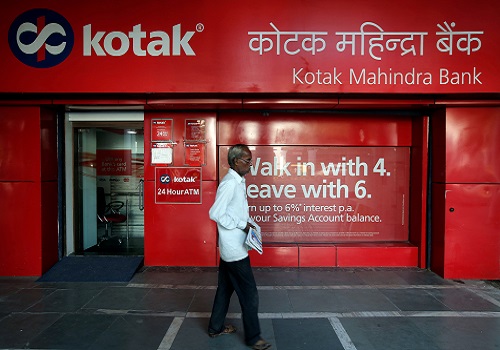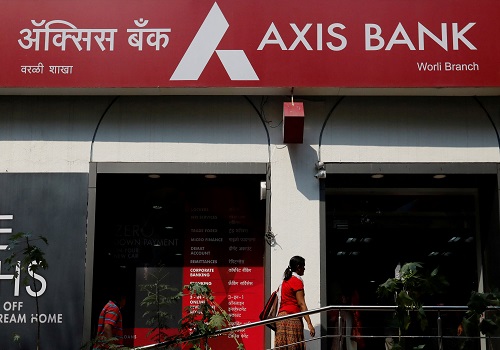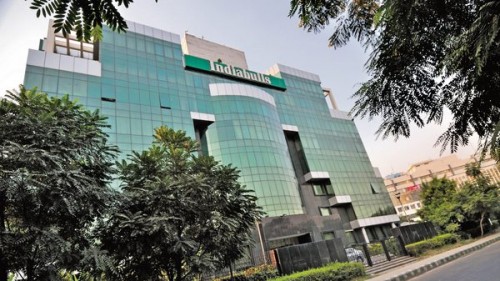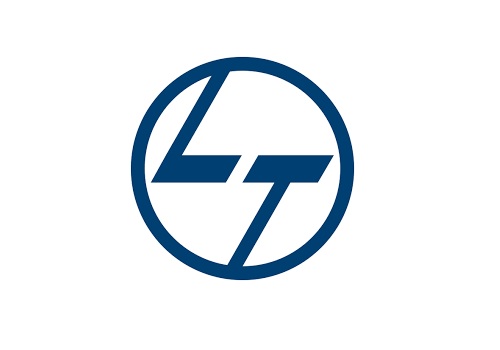IT Sector Update - Value of the unknown? By ICICI Securities

Follow us Now on Telegram ! Get daily 10 - 12 important updates on Business, Finance and Investment. Join our Telegram Channel
https://t.me/InvestmentGuruIndiacom
Download Telegram App before Joining the Channel
Value of the unknown?
Our anti-consensus UNDER WEIGHT IT (2021 – A year of Physicalisation of digital?) stance in late Dec-20 and the subsequent rating downgrades (TCS, TechM etc.) witnessed heavy pushbacks given the then price momentum. Then prevailing street views were largely built upon – (1) extrapolating recovery as long-term growth (g) acceleration and (2) calls for further sector re-rating (even after 58%+). Despite the recent correction and under-performance, multiples still remain bloated and higher than global tech in many cases, notwithstanding inferior growth. We now sense incremental caution in investor conversations in light of heavy NASDAQ / FX volatility. Even as broader markets re-rated due to lower rates (r), the growth – rerating asymmetry is more alarming in IT. Despite consensus keeping FY21-23E revenue CAGR constant or lower (vs pre-covid), rerating was led by a disproportionate rise in (g) estimates - narrowing (r-g) spreads further! Our in-depth analysis (link, link) suggests (g) is unlikely to increase materially (vs pre-covid). We see spreads to be at a bigger risk of widening for IT (vs market) as unrealistic (g) expectations correct, besides systemic risk of rising (r). In near term, reflationary environment should make IT’s relatively low growth unenticing. Post Dot Com / GFC learning too suggests elevated multiples in recovery will be short-lived despite low rates (r). Stronger US$ / potential 2nd wave in India are key risks to our stance.
* Consensus’ expectations on (g) acceleration will likely witness a reset. Post the covid-led demand and supply shocks over Feb – Jun ’20, most sectors - including the ones where contact-less transactions are difficult (e.g. real estate) - recovered over H2CY20. We understand that in case of Indian IT, the recovery was slightly quicker given the better feasibility of end to end contact less operations. In conjunction with the euphoria around ‘virtual only’ future enabled by cloud / digital, consensus seems to be extrapolating recovery (over H2CY20) as long-term growth (g) acceleration.
This is despite no significant changes to FY21-23E revenue growth (vs pre-covid) barring shift of base (from FY21 to FY22E) due to covid disruption. In contrast, global tech names (e.g. Amazon) which actually benefitted due to Covid had seen revenue upgrades for the near term (up to 21%, CY20-22, vs pre-covid) as well.
* Technology changes are more nuanced than what headline optimism suggests. We do not share the headline street optimism on the covid-led acceleration of cloud / digital adoption for three reasons: (1) Recent reversion of traffic from digital to physical channels as Covid scare fizzles out (evident in Google mobility, card payment trends), (2) weakness in ‘incremental’ sales / backlog of hyper-scalars over CY20 (better proxy for ‘acceleration’), (3) Gartner’s IT spending outlook for CY21 & CY22 (broadly similar to pre-Covid and < US’ N-GDP growth) and (4) moderation in optimism of hyperscalars / global techs (e.g. Facebook) underpin our assessment (Refer Charts 1-5).
Secondly, by its very nature, the long-term visibility around a technology change is often limited. A case in point was a similar euphoria around block chain / IoT over FY15-18. Many services companies then expected these POCs to gain scale and contribute meaningful revenue over the medium term. However, in the hindsight, neither scaled up in-line with the expectations. In the current context, this makes us more cautious as the entire consensus optimism seems to be baked into the longer term (g) even as near-term revenue trajectory (FY20-23) remained constant or lower!
Finally, technology changes are often accompanied by cannibalization / deflation of the existing revenue lines. Hence, merely betting on new stream of revenue will result in an incomplete picture if not adjusted for offsetting component. For instance, despite the optimism around accelerated cloudification, Wipro’s revenue from Cloud & Infrastructure Services (CIS) segment reported a decline over CY20. This is due to the sharp revenue drop in infra services that accompanied higher cloud revenue.
Headline growth / profitability will look optically strong until Jun-20.
Dec-20 witnessed strong recovery in some segments (e.g. manufacturing, communications) which did not fully recover in Sep-20. Even after two quarters of recovery from covid lows in Jun-20, revenue run-rate for some companies (e.g. Wipro, TechM) is still lower than pre-covid levels. That leaves scope for further recovery even in Mar-21. In conjunction with inorganic revenue from captive takeover deals (e.g. TCS, Wipro), sector growth should look optically strong until Jun-20 (both QoQ and YoY basis).
Despite most companies facing wage hike impact from Mar-20, margins may remain elevated in the immediate term (H1CY21) due to covid-led transient tailwinds (e.g. continued travel restrictions, WFH etc.). We expect further improvement in metrics like offshore effort as incremental project ramp ups too happen offshore. However, (1) another round of wage hikes in FY22, (2) pass through of some of these benefits to clients through repricing and (3) higher cost of specialised skill sets should more than negate incremental margin benefits in FY22.
Notwithstanding above mentioned transient benefits, we expect EBIT margins of most of our coverage companies to revert to pre Covid normal as and when (1) travel / office work resumes (from Sep-21 in our base case) or (2) clients start demanding pass through of benefits. Given the recent volatility in exchange rates, USD – INR movement is a key thing to watch out for. Majority of the street seems to be currently factoring in FX rates as high as Rs 75-77 / USD for FY22-23E. Even a scenario of stable rates henceforth would translate into earnings downgrades.
Up to ~60% higher value for unknown & unseen variable?
NIFTY IT now trades at ~58% premium (vs NIFTY PHARMA: +22%, BANK NIFTY: +2%, NIFTY FMCG: +5%) to the 5-yr average multiple before covid. Post covid, while lower interest rates (r, by 150bps) narrowed the (r-g) spreads for broader markets, the spreads narrowed further in case of IT stocks as street also factored in higher (g). Surprisingly, the resultant re-rating in Indian IT was higher than in most global tech companies (e.g. Microsoft, Amazon, Alphabet) which will be the direct beneficiaries in the scenario of accelerated digitalisation / cloudification. It should be noted that the sector now trades at a premium to most global techs despite under growing.
As the base becomes cleaner from Sep-21++ and long term sustainable growth rates become evident, we expect consensus to correct (g). In addition, expectations around rising interest rates (r) can actually pose a double whammy for the Indian IT sector as the (r-g) spreads increase. Even in near term, reflationary environment should make IT’s relatively low growth (Gartner expects IT spends to increase 6.0%/6.3% in CY21 / CY22, vs US N-GDP growth expectation of 9.0%/6.5%) unenticing. Typical of the bull market, calls for further secular re-rating (even after 58%) are unsurprising! However, post Dot Com / GFC learning suggests such elevated multiples during recovery may be short-lived despite protracted near zero interest rates. Stronger US$ / rising covid cases in India are key risks to our stance.
To Read Complete Report & Disclaimer Click Here
For More ICICI Securities Disclaimer https://www.icicisecurities.com/AboutUs.aspx?About=7
Above views are of the author and not of the website kindly read disclaimer










More News

Real Estate Sector Update - From dust to glory : the surREAL story By Motilal Oswal












